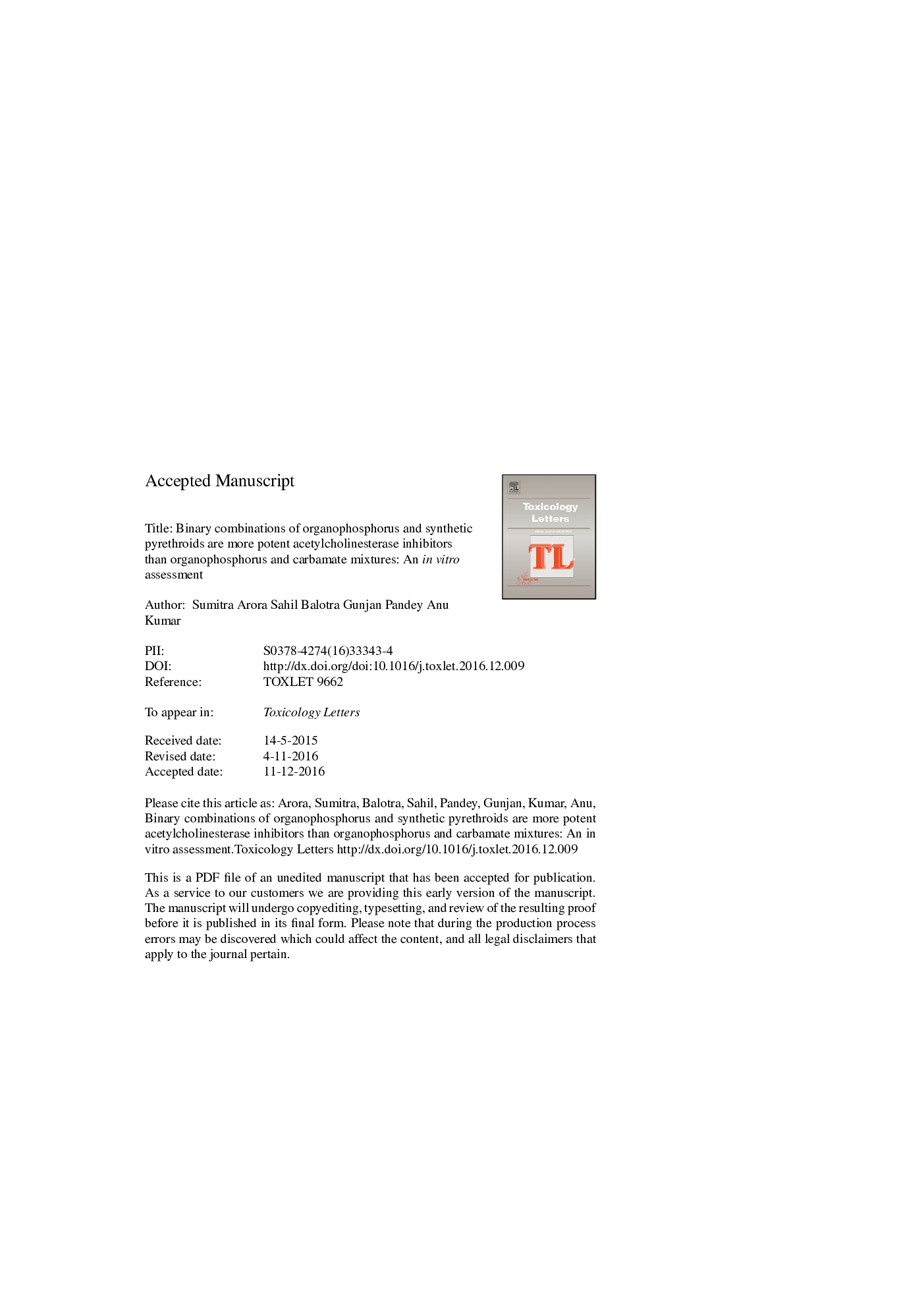| Article ID | Journal | Published Year | Pages | File Type |
|---|---|---|---|---|
| 5562183 | Toxicology Letters | 2017 | 25 Pages |
Abstract
Anticholinesterase insecticides such as organophosphorous (OP) and carbamates pesticides (CB); and synthetic pyrethroids (SP) pesticides commonly co-occur in the environment. This raises the possibility of antagonistic, additive, or synergistic neurotoxicity in exposed organisms. Acetylcholinesterase (AChE) inhibition has been demonstrated to be useful as a biomarker for exposure to OP and CBs in many environments. This study investigated the response of housefly (Musca domestica) head AChE (HF-AChE) exposed to five OPs; chlorpyrifos (CPF), malathion (MLT), triazophos (TRZ), monocrotophos (MCP) and profenofos (PRF) and two CBs; carbaryl (CRB) and carbofuran (CBF) as individual compounds and as binary mixtures of OPs and CBs under in vitro conditions. In addition, the selected OPs and CBs were evaluated for their toxicity in binary combinations with two SPs; deltamethrin (DLT) and cypermethrin (CYP) at fixed concentrations of 0.1 and 10 μg/L. The toxicological interaction of five OPs with two CBs pesticides was evaluated under oxidised and un-oxidised conditions using a toxic unit (TU) approach and a concentration addition (CA) model. Pyrethroid combinations were assessed only under oxidised conditions. Since OPs and CBs act by a similar mechanism of inhibition of AChE, a dose additive effect was expected, but not conclusively found. TRZ with either CBF or CRB exhibited synergism under oxidised and un-oxidised conditions but the degree of synergism was stronger under un-oxidised conditions. Additivity was exhibited by CBF + MCP, CRB + MCP, CRB + MLT and CBF + MCP under un-oxidised conditions and CRB + MCP and CRB + CPF under oxidised conditions. Pyrethorids in combination with OPs (TRZ, MLT and CPF) were highly synergistic. In the present study, we used pure housefly head AChE without any interference of monooxygenase and/or esterase enzyme activities. Therefore these other enzymes were not producing the observed deviations from concentration-addition in the binary combinations between OPs, CBs and SPs. The mechanisms of OP, CB and SP interactions in pesticide mixtures requires further investigation.
Related Topics
Life Sciences
Environmental Science
Health, Toxicology and Mutagenesis
Authors
Sumitra Arora, Sahil Balotra, Gunjan Pandey, Anu Kumar,
